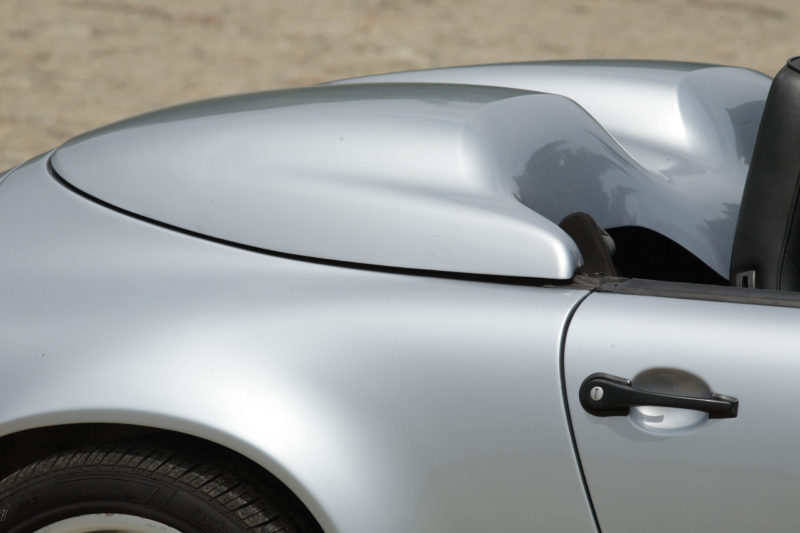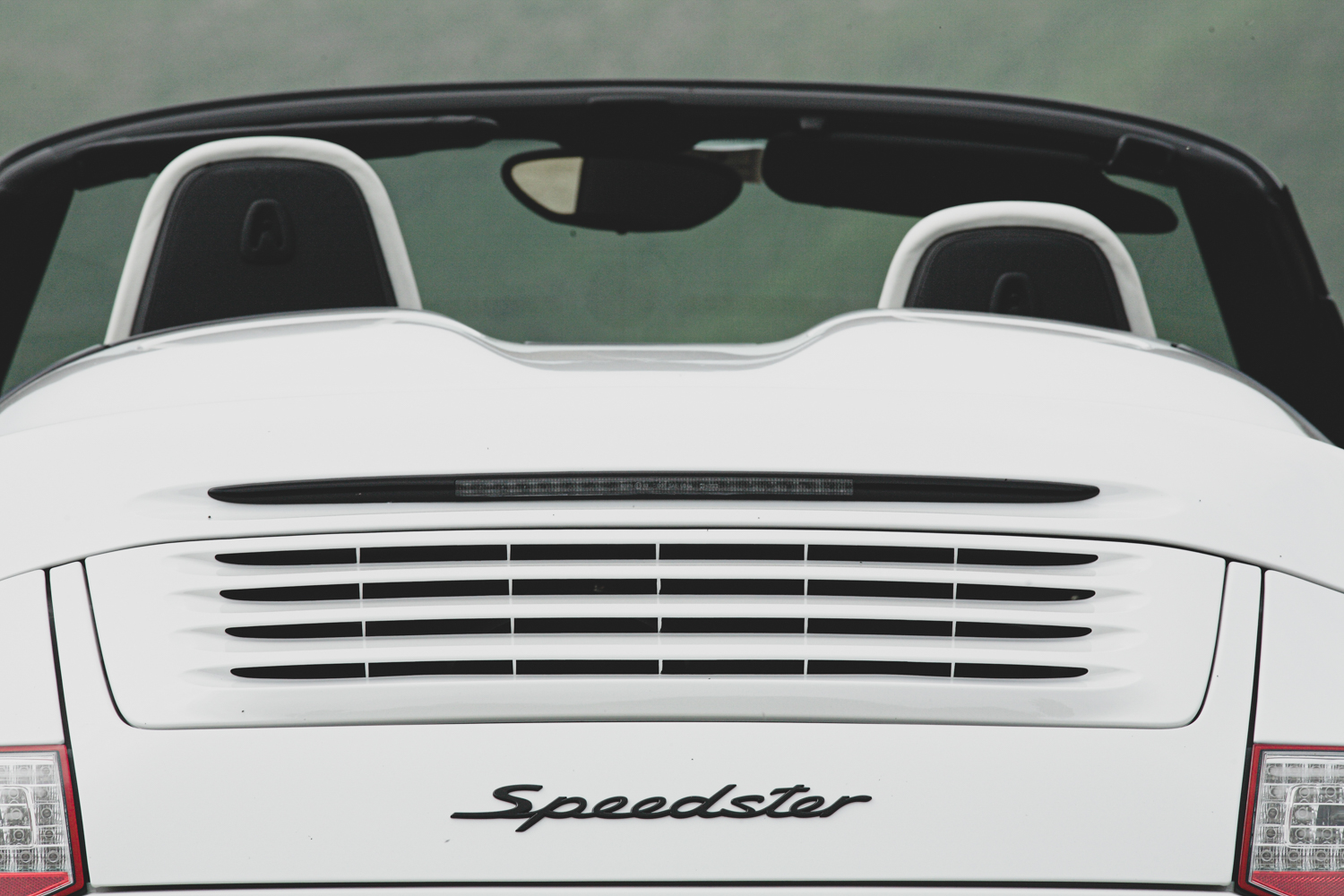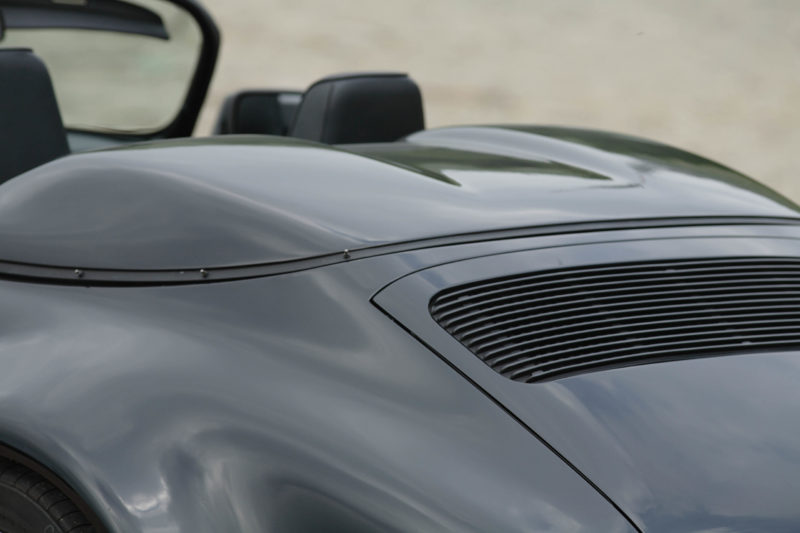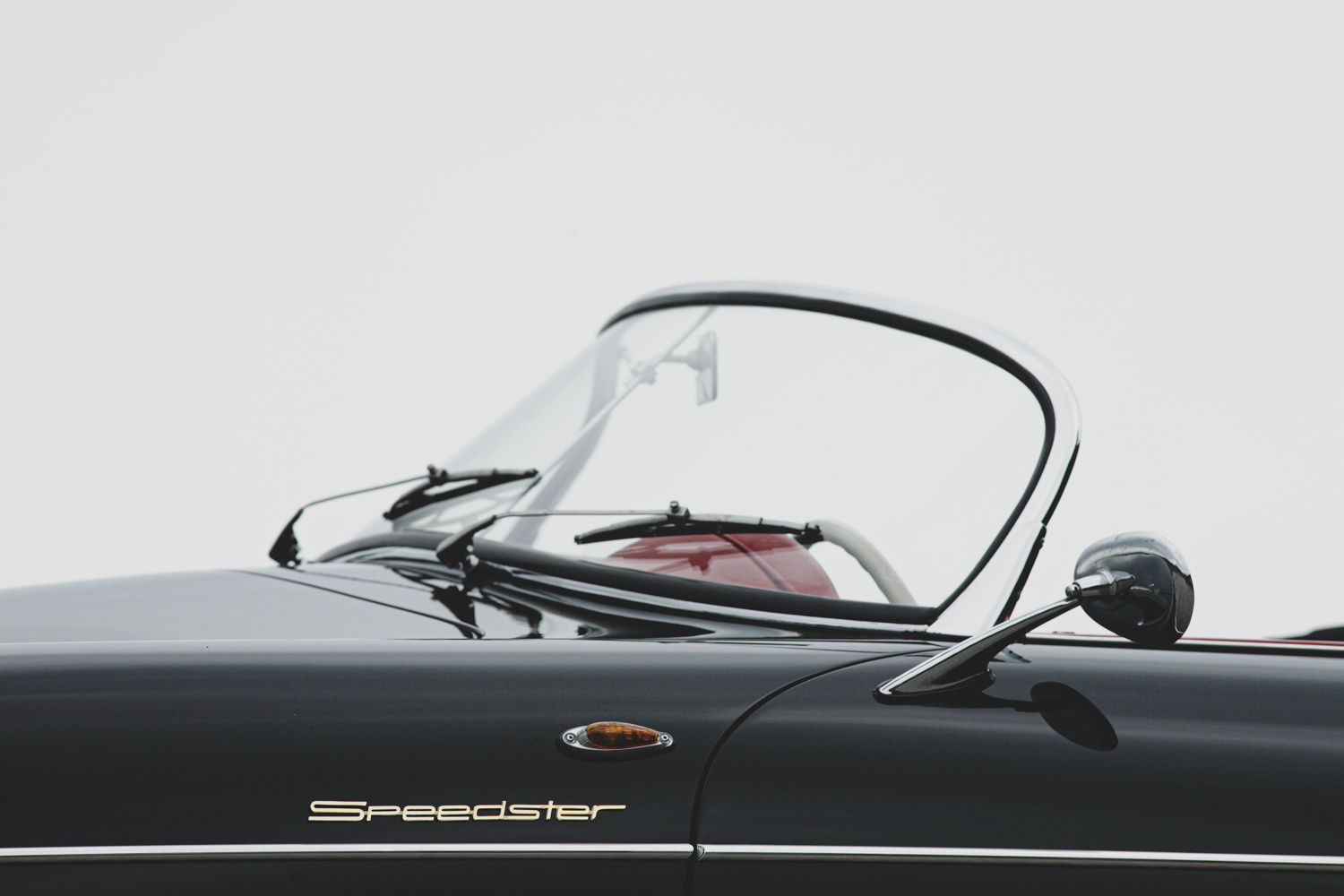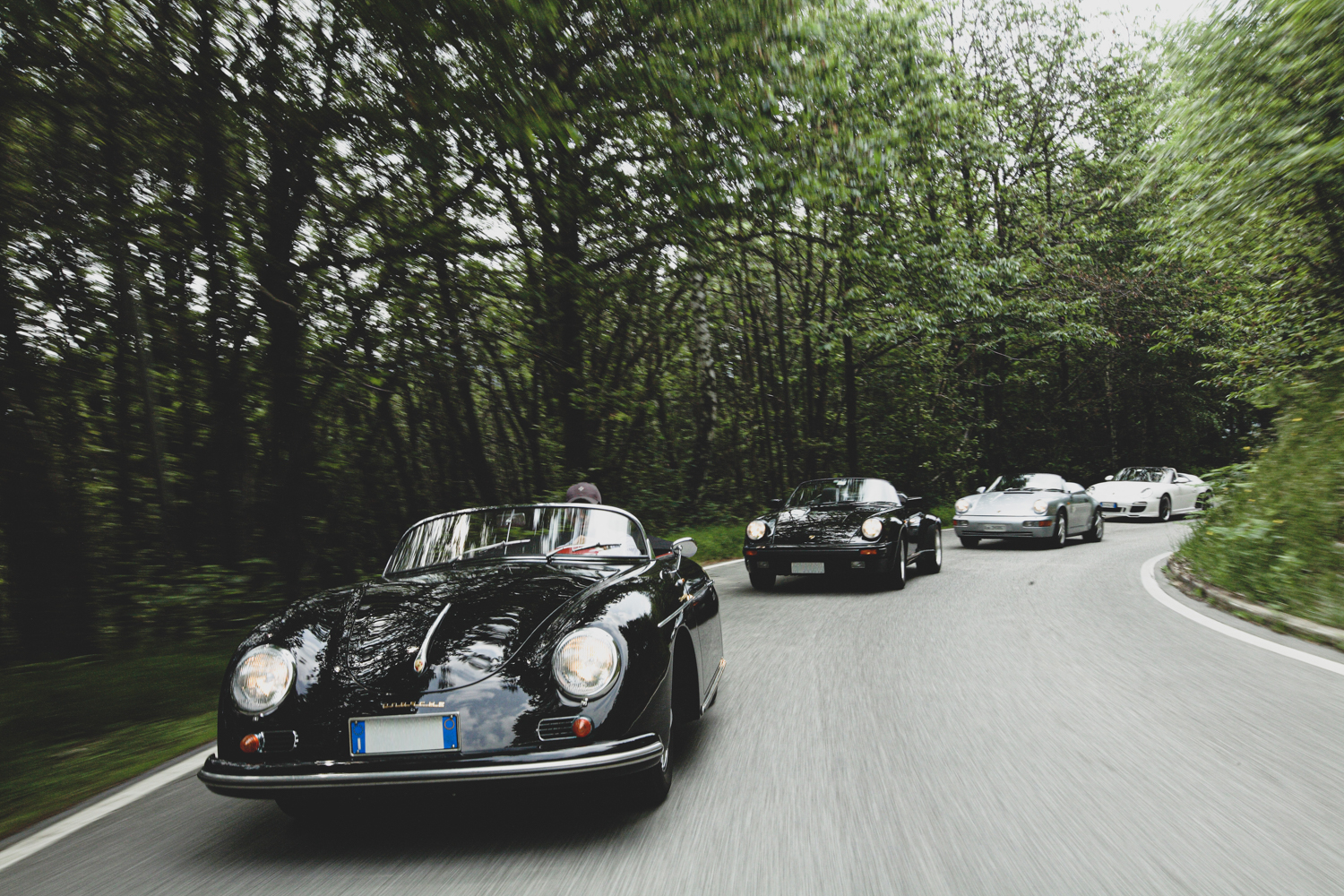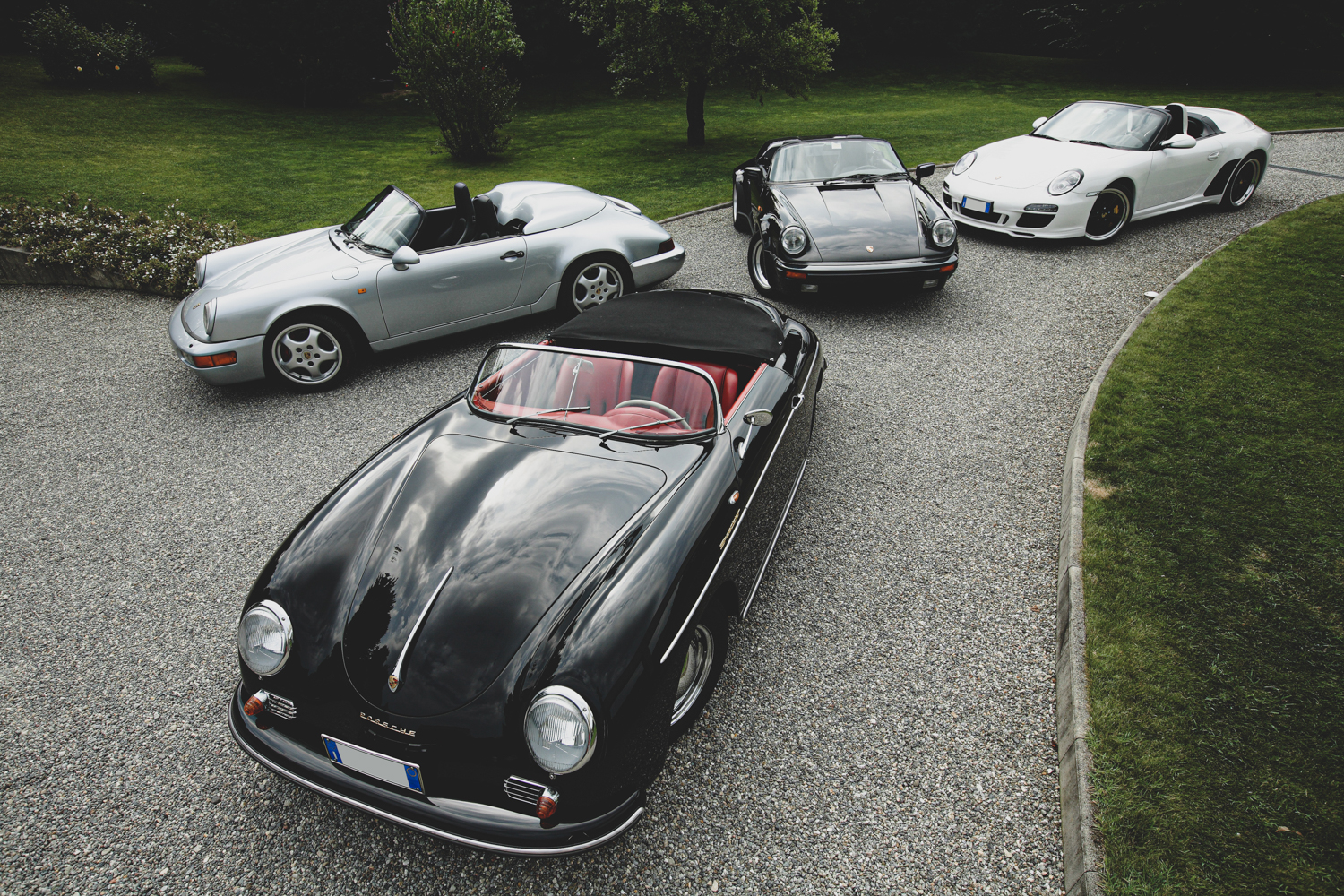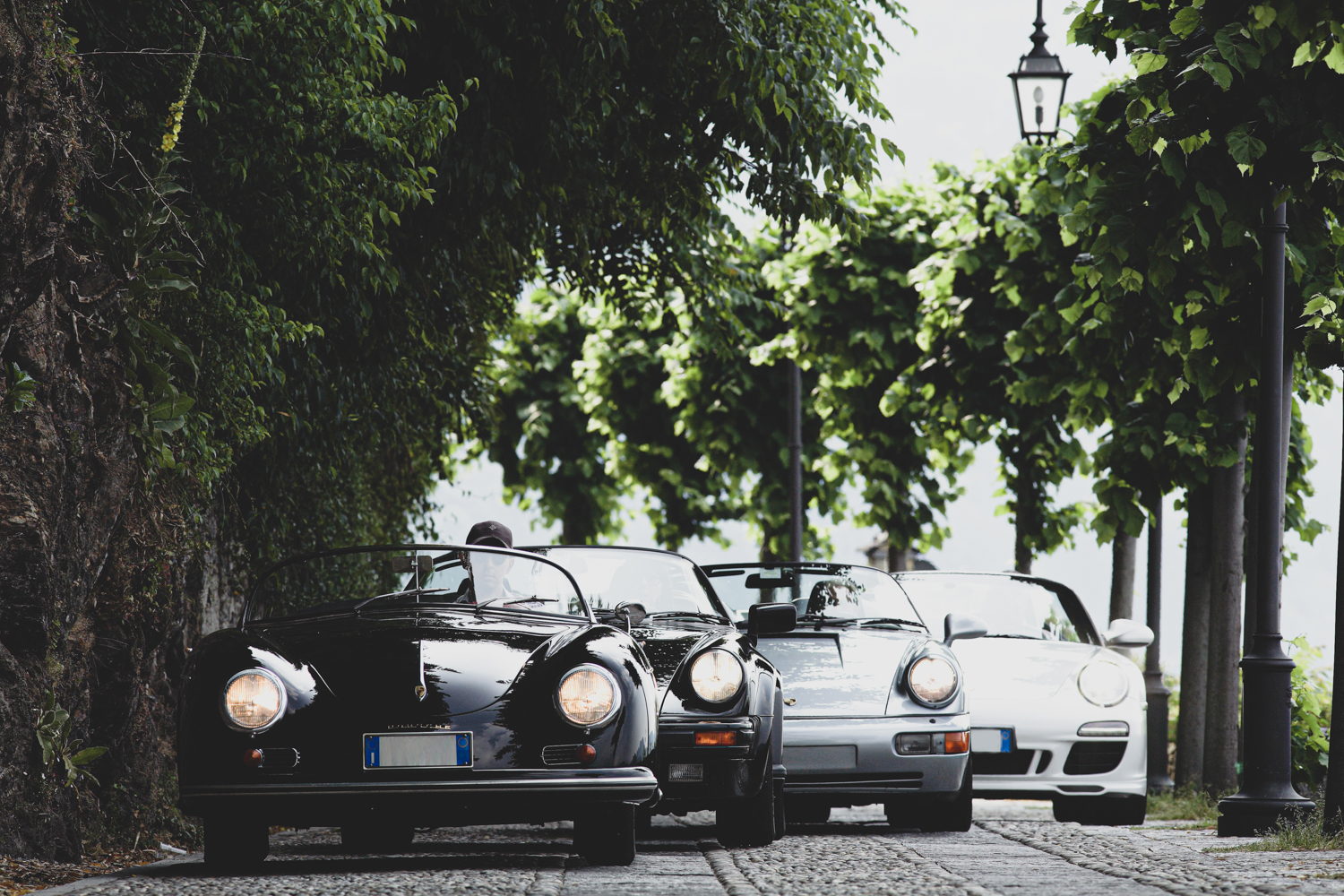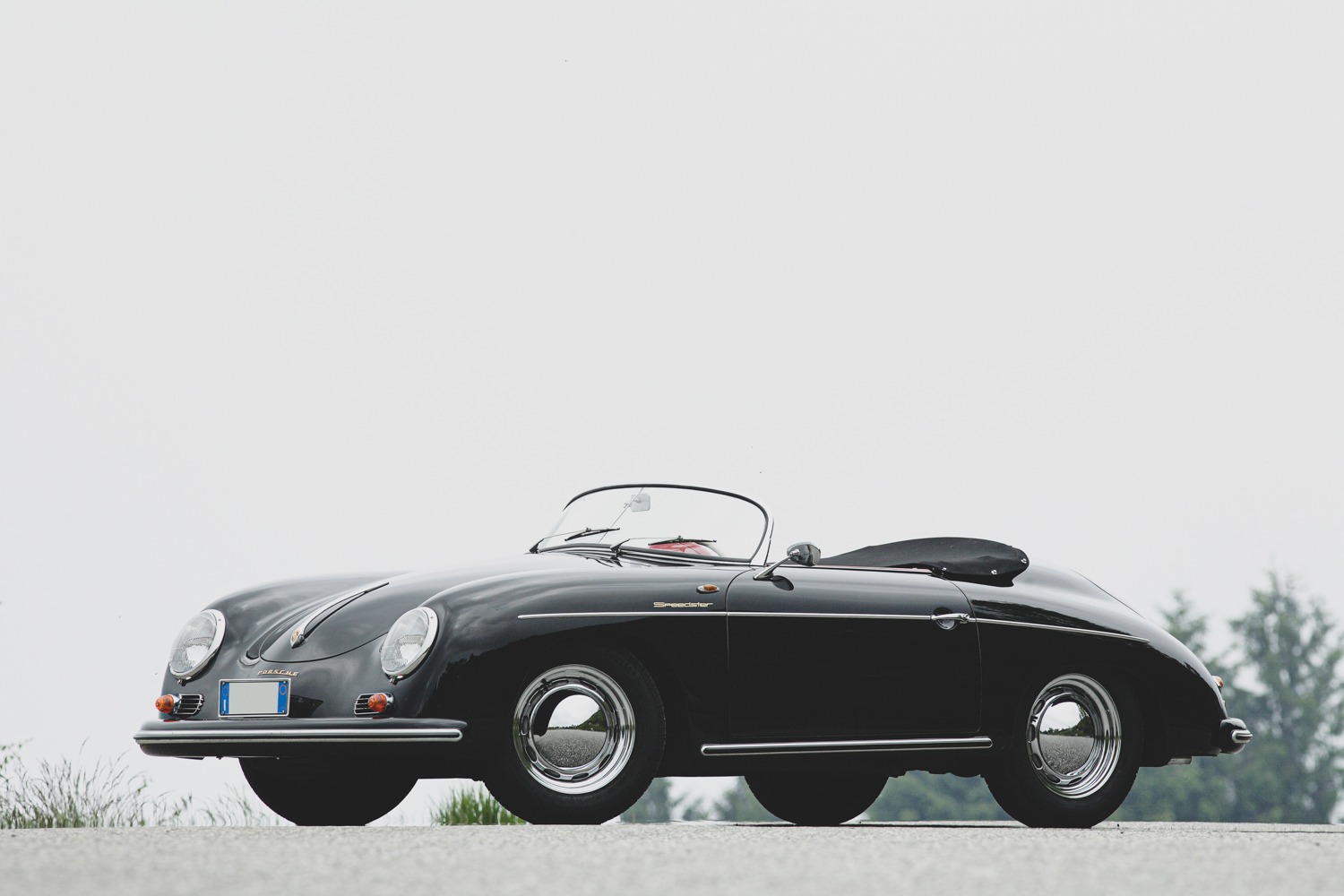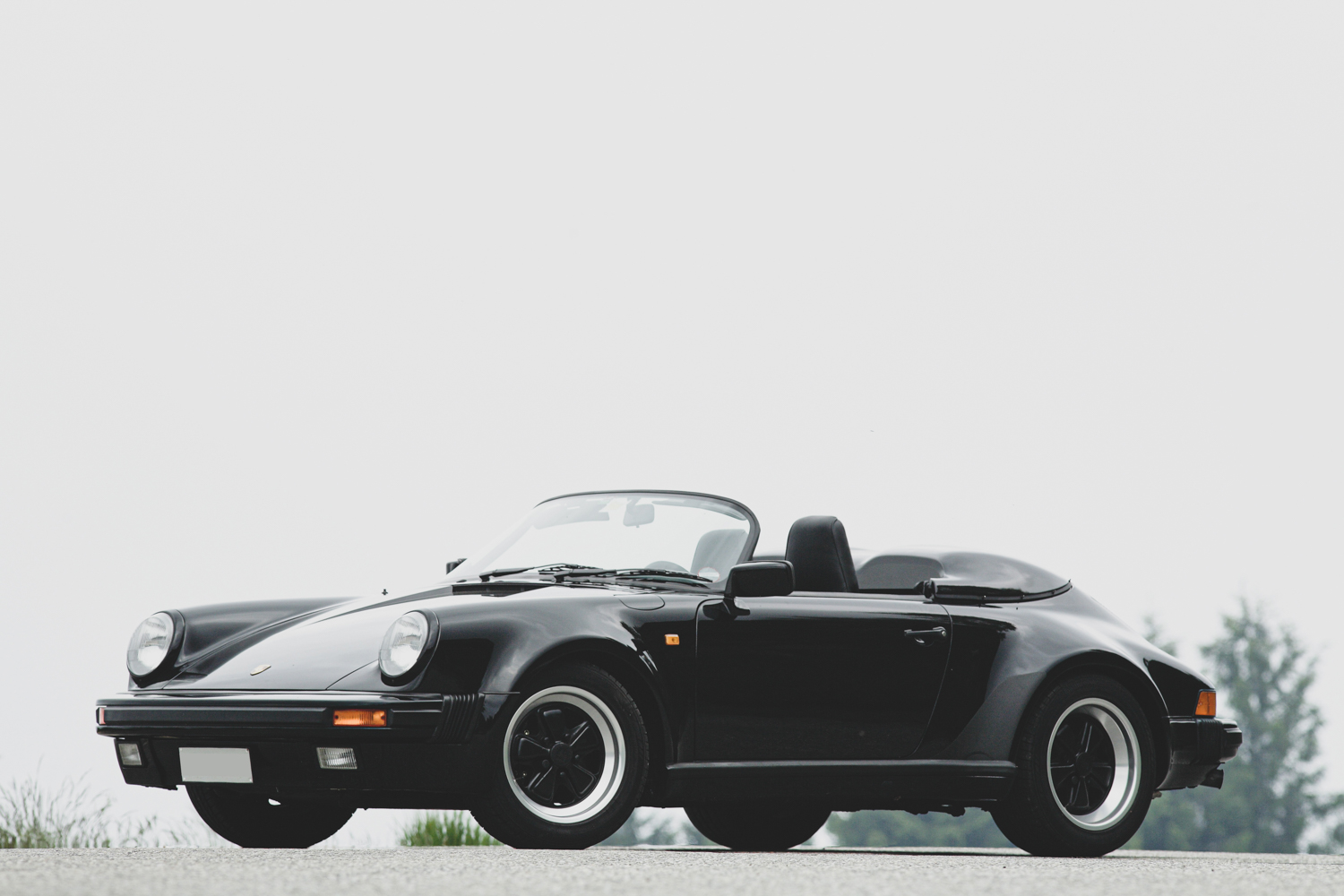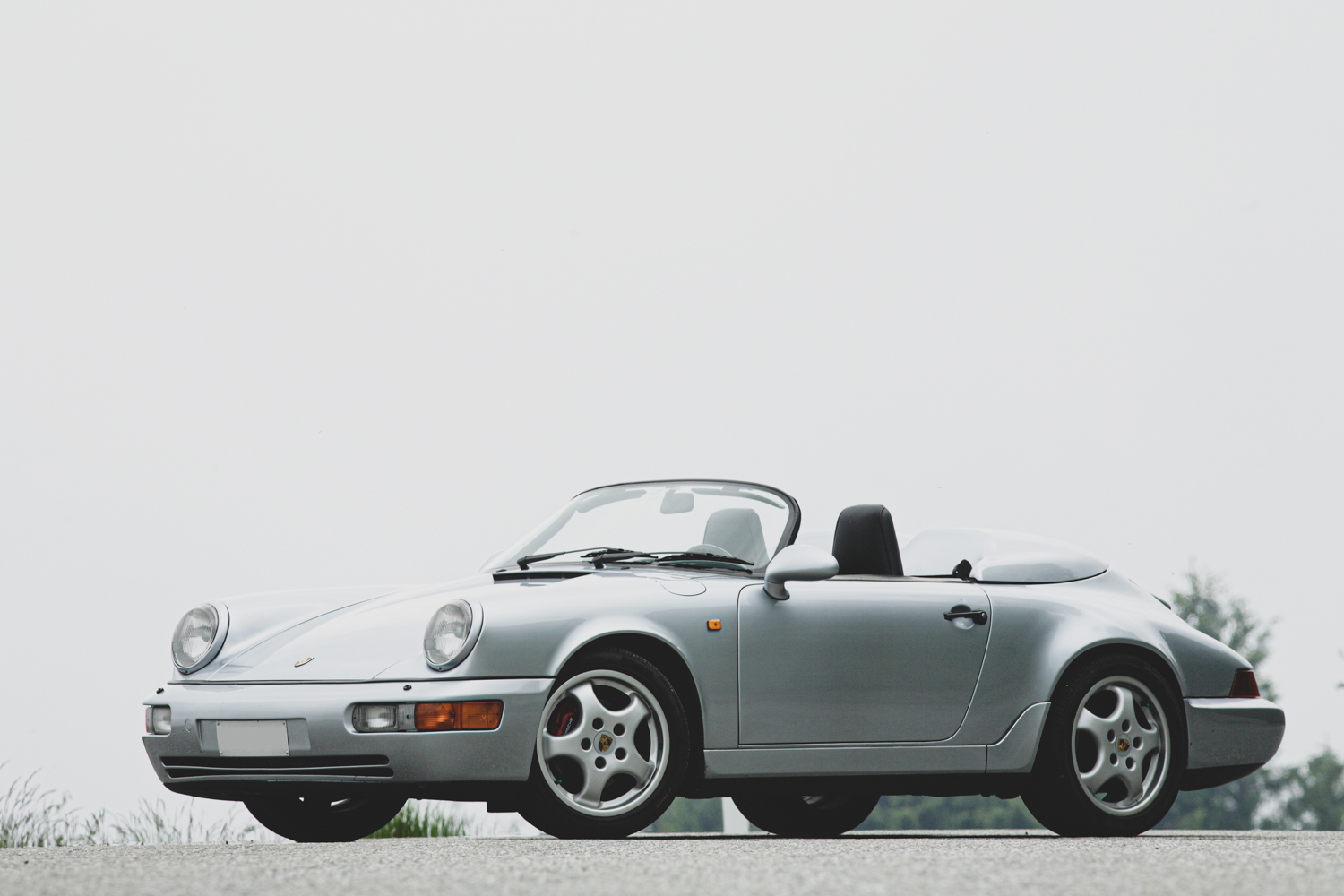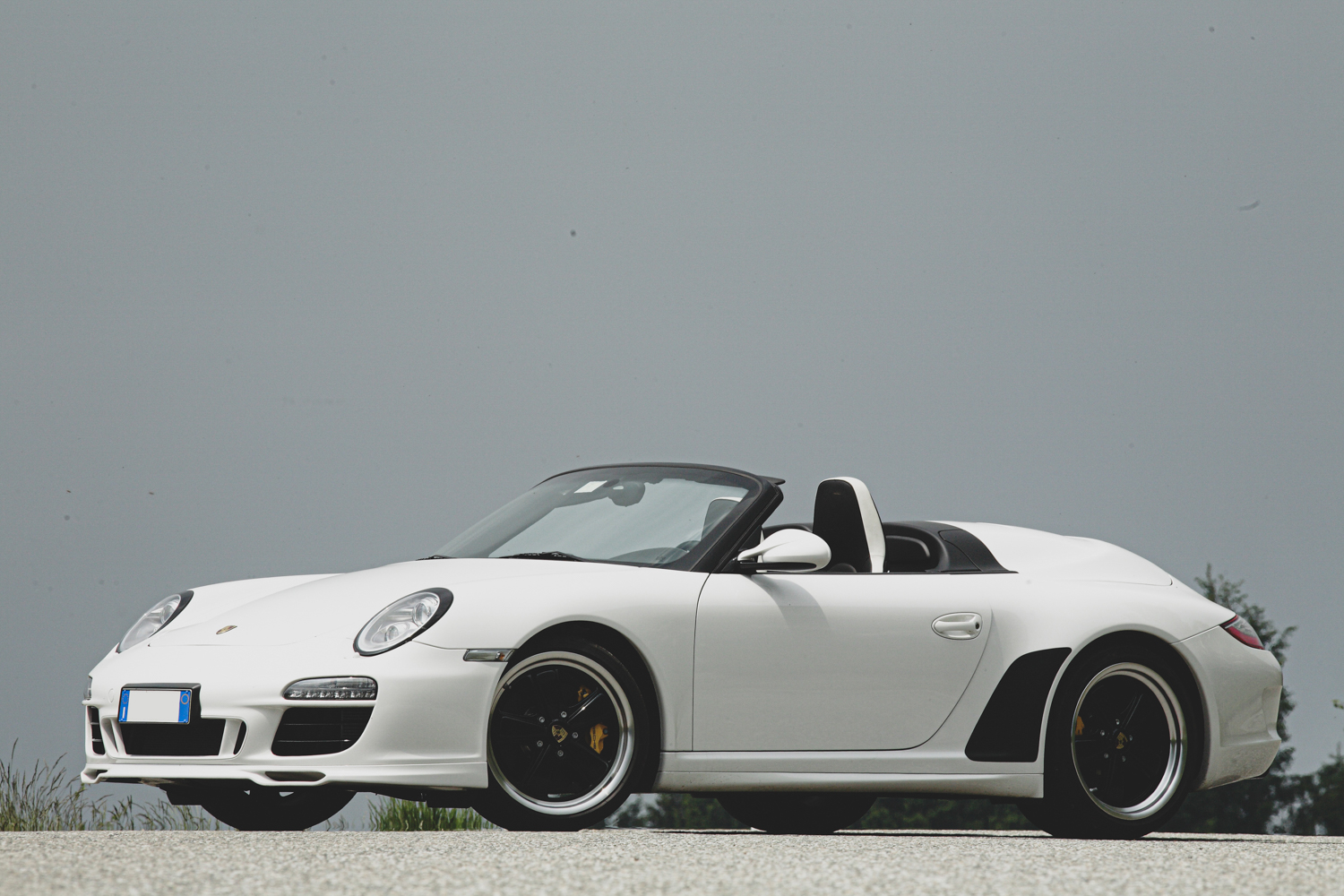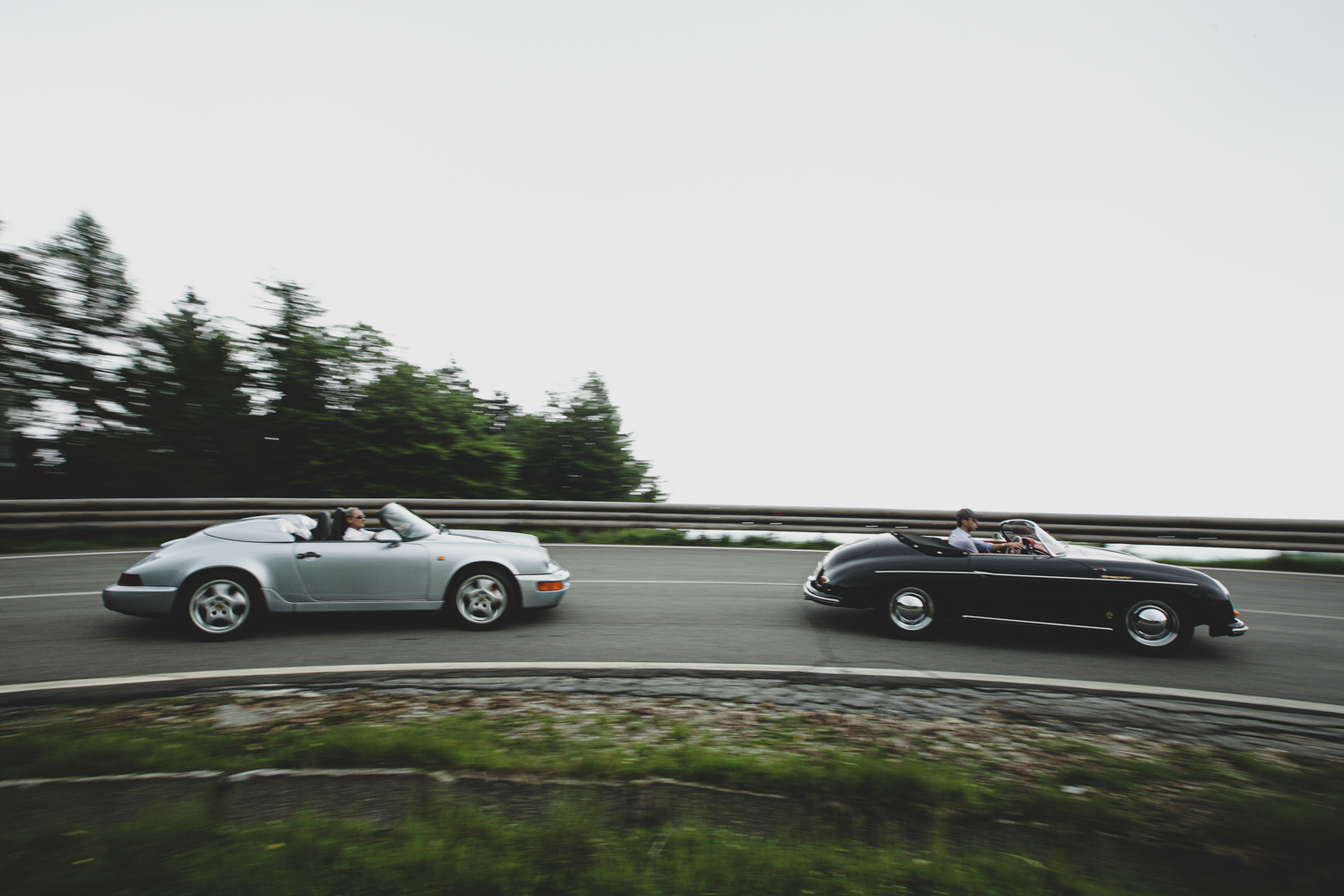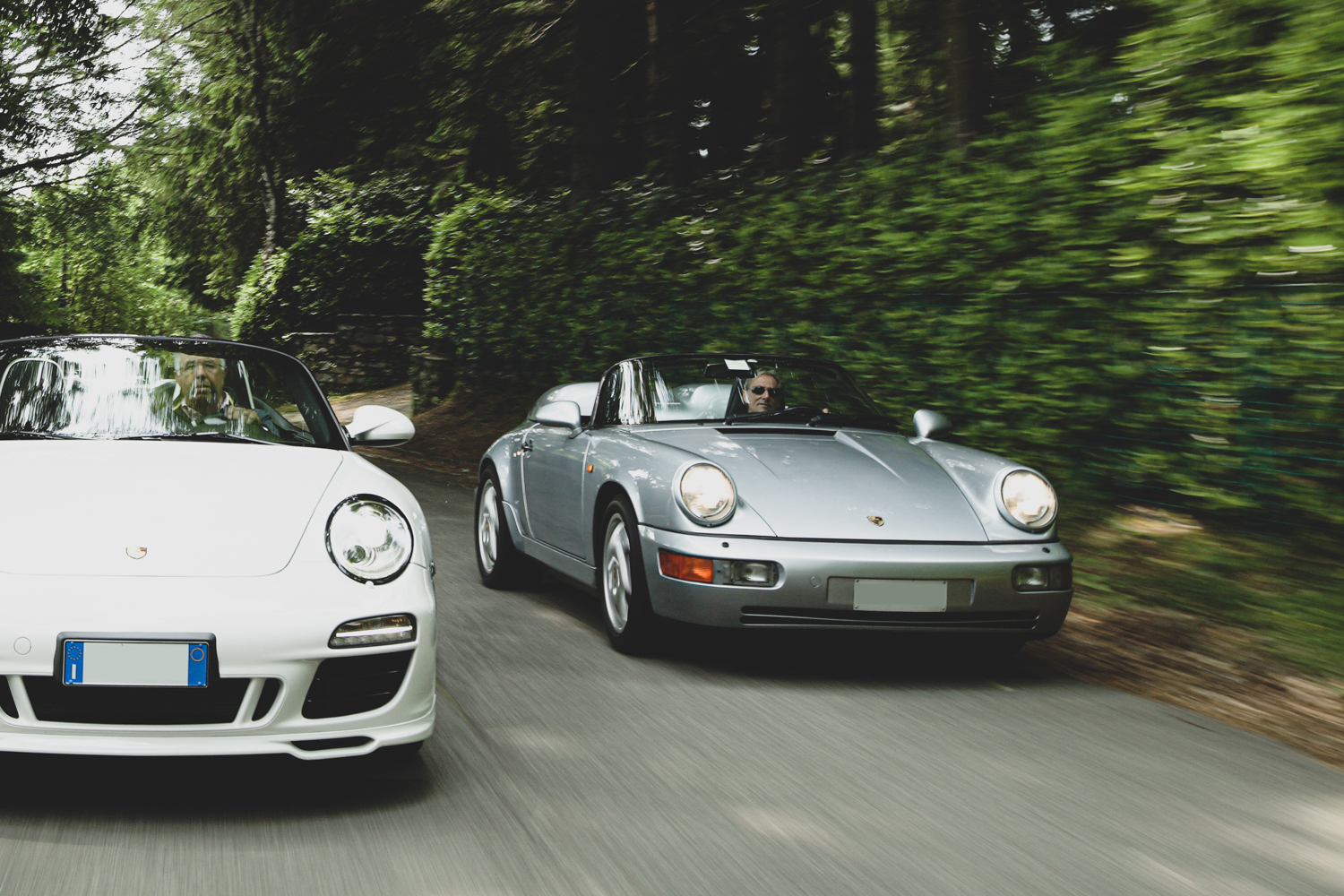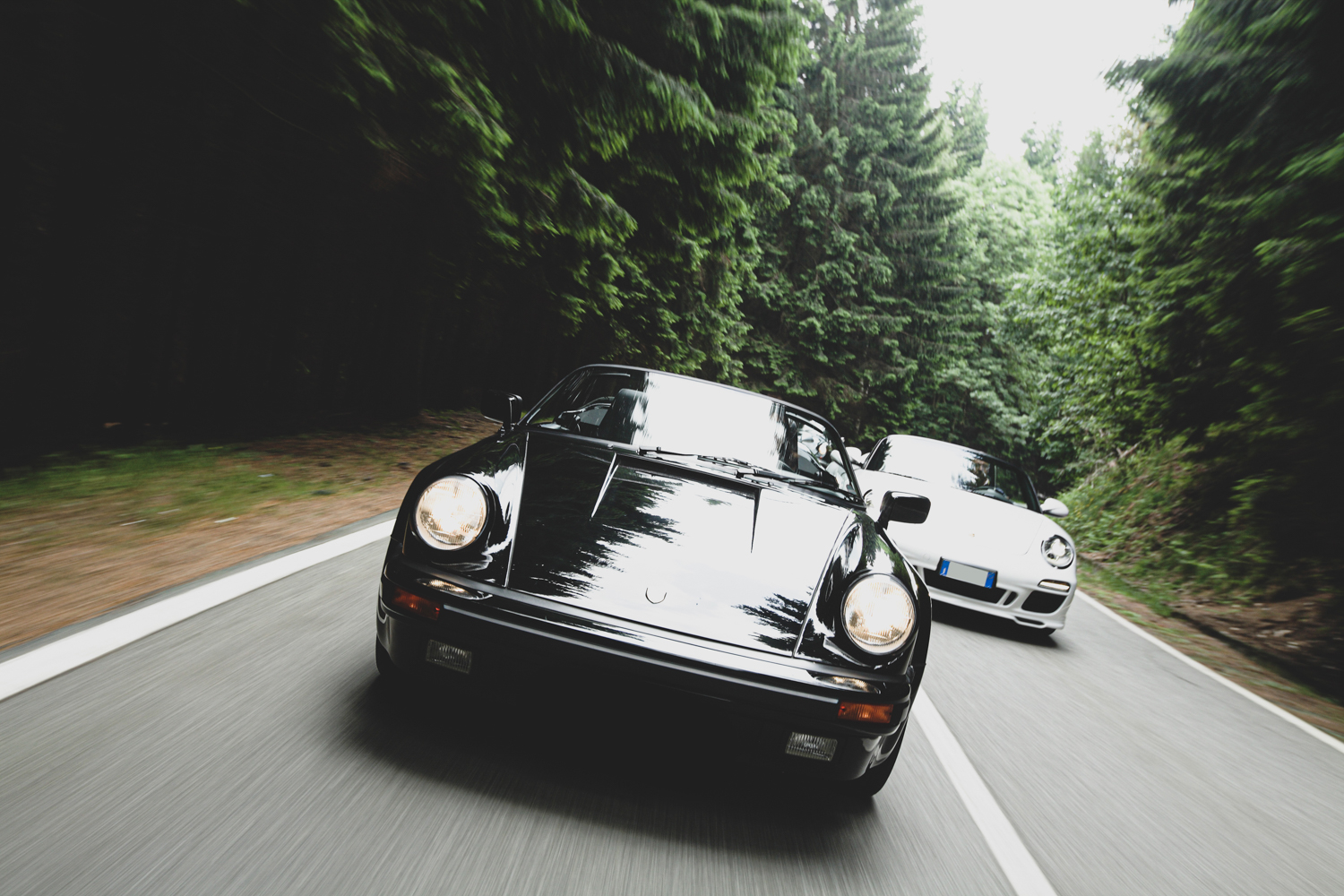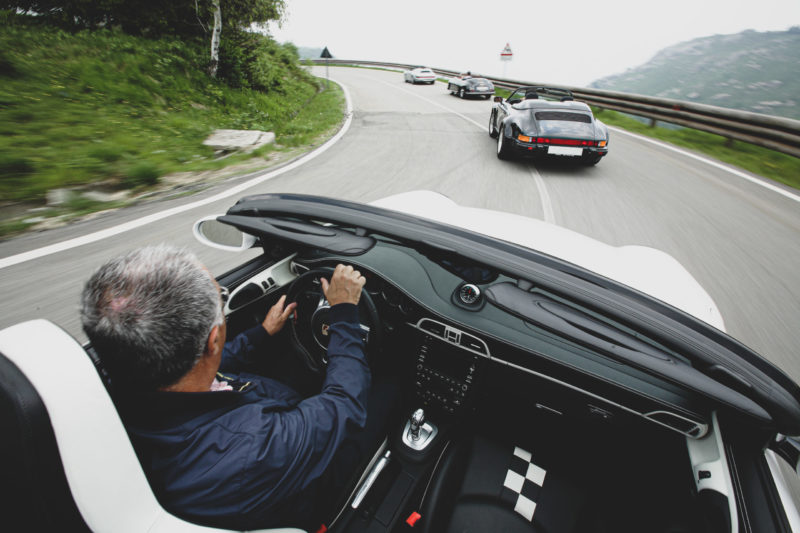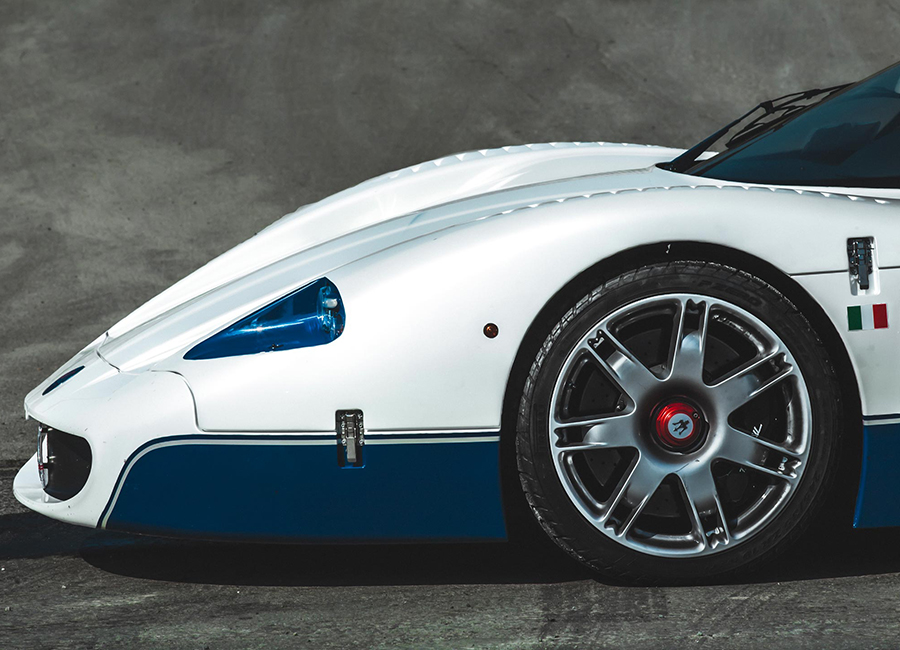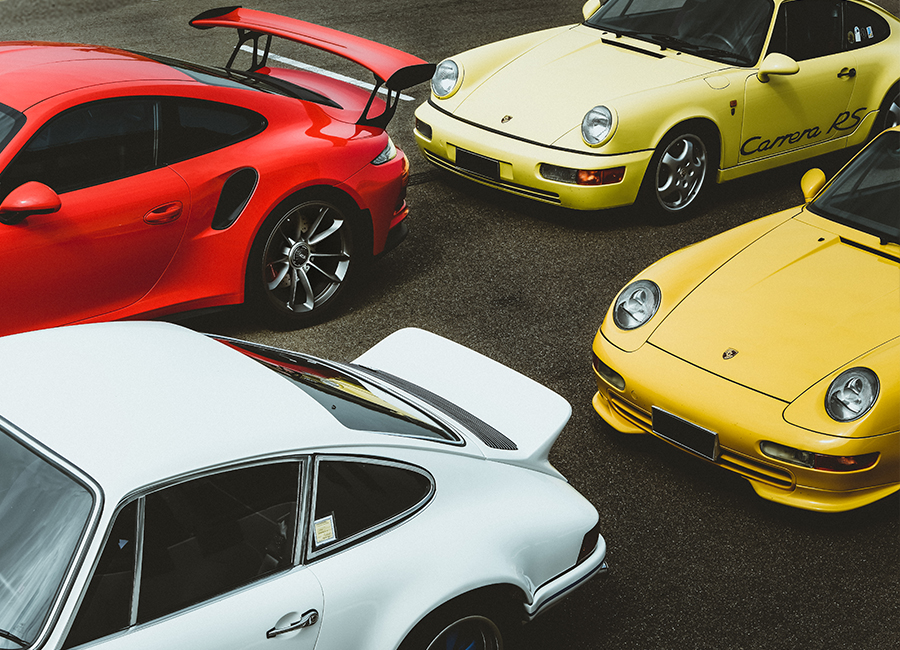THE PHILOSOPHY OF REMOVING
That brilliant name which matched two loving words such as Speed and Roadster represents, perhaps, the first marketing operation carried out by a sports cars manufacturer.
Max Hoffman, supercars US importer, is the man behind the idea of producing a ``cheaper and sportier`` Porsche, removing some trimmings from the expensive 356 Cabriolet. Making achievable a niche product like the 356 Cabriolet was a commercial stunt to attract a wider public.
Indeed, Hoffman, suggested to Ferry Porsche to built a car to sell at 3000 dollars (the Cabriolet cost well over 5000 dollars) – the Speedster went “on offer” to the market for only 2995 dollars.
However, this commercial excuse gave rise to one of the fascinating open-top cars ever: the lower and more steeply and raked windshield (10cm less than the Cabriolet) lend the Speedster a seductive fit. The replacement of some interior details, such as the seats (without reclining backrest) the upholstery more spartan, dashboard without drawer and the side windows replaced by simple removable bulkheads in canvas and plastic, led to a weight saving of 80 kg. These modifications allowed the Speedster to be faster (160 Km/h) and snappier (0-100 in 10.5 seconds) than the Cabriolet De Luxe.
The Speedster design came out in 1952, but first models production were born in 1954 on the features of the 356 Pre A models. It combined the sheet steel body of the Cabriolet with four small round rear lights, two-watch dashboard and a windscreen with a thin central chrome-plated reinforcement. As far as the mechanic was concerned the engine was a 4-cylinder boxer of 1500cc, replaced in 1956 by a 1600cc which supply 90hp. However, in 1955 were produced an extraordinary Speedster called Carrera GS, which mounted a unit derived from the 550 Spyder’s racing engine with as many as 110hp available – it was the first road-going model Porsche that reached a top speed of 200km/h.
It took 26 years before the glorious name Hoffman’s launched reappeared on the body of a Porsche. Indeed, in 1988 the 911 Speedster was conceived at the end of the model era (in 1989 the 964 replaced the previous model). In this case, production of the Speedster versions was functional to the sale of the last examples of a model that had to be replaced soon. Therefore also a commercial operation, although perhaps a little less refined than the first. Although the idea of a 911 Speedster had already appeared in 1987 (with a prototype shown at the Frankfurt Motor Show), Porsche kept this “jolly” in-store to increase interest, and only put it on sale at the end of 1988, shortly before the launch of the new Carrera 4 (version 964). Despite these market strategies, which could annoy the withering, the 911 Speedster was a great success and, thanks to its slimness, aerodynamics and originality, it met the goals that Porsche had set itself.
The Speedster version of the 964 generation was not as successful and appreciated by the public as the 911. Perhaps also because it was not produced in the fascinating and gritty Turbo Look version: even the more rolled and less aggressive shapes of the 964, were not an ideal basis for the version that was supposed to represent a synthesis of purity, grit and sportiness. In this regard, then, it must be said that even the 2010 addition to the Speedster generation, the 997, presented at Paris Motor Show, leaves much to be desired about the initial concept that the 356 Speedster embodied: a slender lightness.
The 997, in fact, with its slightly raised waistline, not precisely compact dimensions, the PDK double-clutch gearbox, the weight of more than a ton and a half (1540 kg), seems to have become a Speedster built reluctantly, without too much conviction and gives the impression, even more than the cars that have preceded it, that the commercial policy (356 cars produced, all numbered) has prevailed on the taste to create an essential car, slim and light, that could really embody the myth of its ancestor 356.
ENGINEROUTE
THE PHILOSOPHY OF REMOVING
That brilliant name which matched two loving words such as Speed and Roadster represents, perhaps, the first marketing operation carried out by a sports cars manufacturer.
Max Hoffman, supercars US importer, is the man behind the idea of producing a ``cheaper and sportier`` Porsche, removing some trimmings from the expensive 356 Cabriolet. Making achievable a niche product like the 356 Cabriolet was a commercial stunt to attract a wider public.
Indeed, Hoffman, suggested to Ferry Porsche to built a car to sell at 3000 dollars (the Cabriolet cost well over 5000 dollars) – the Speedster went “on offer” to the market for only 2995 dollars.
However, this commercial excuse gave rise to one of the fascinating open-top cars ever: the lower and more steeply and raked windshield (10cm less than the Cabriolet) lend the Speedster a seductive fit. The replacement of some interior details, such as the seats (without reclining backrest) the upholstery more spartan, dashboard without drawer and the side windows replaced by simple removable bulkheads in canvas and plastic, led to a weight saving of 80 kg. These modifications allowed the Speedster to be faster (160 Km/h) and snappier (0-100 in 10.5 seconds) than the Cabriolet De Luxe.
The Speedster design came out in 1952, but first models production were born in 1954 on the features of the 356 Pre A models. It combined the sheet steel body of the Cabriolet with four small round rear lights, two-watch dashboard and a windscreen with a thin central chrome-plated reinforcement. As far as the mechanic was concerned the engine was a 4-cylinder boxer of 1500cc, replaced in 1956 by a 1600cc which supply 90hp. However, in 1955 were produced an extraordinary Speedster called Carrera GS, which mounted a unit derived from the 550 Spyder’s racing engine with as many as 110hp available – it was the first road-going model Porsche that reached a top speed of 200km/h.
It took 26 years before the glorious name Hoffman’s launched reappeared on the body of a Porsche. Indeed, in 1988 the 911 Speedster was conceived at the end of the model era (in 1989 the 964 replaced the previous model). In this case, production of the Speedster versions was functional to the sale of the last examples of a model that had to be replaced soon. Therefore also a commercial operation, although perhaps a little less refined than the first. Although the idea of a 911 Speedster had already appeared in 1987 (with a prototype shown at the Frankfurt Motor Show), Porsche kept this “jolly” in-store to increase interest, and only put it on sale at the end of 1988, shortly before the launch of the new Carrera 4 (version 964). Despite these market strategies, which could annoy the withering, the 911 Speedster was a great success and, thanks to its slimness, aerodynamics and originality, it met the goals that Porsche had set itself.
The Speedster version of the 964 generation was not as successful and appreciated by the public as the 911. Perhaps also because it was not produced in the fascinating and gritty Turbo Look version: even the more rolled and less aggressive shapes of the 964, were not an ideal basis for the version that was supposed to represent a synthesis of purity, grit and sportiness. In this regard, then, it must be said that even the 2010 addition to the Speedster generation, the 997, presented at Paris Motor Show, leaves much to be desired about the initial concept that the 356 Speedster embodied: a slender lightness.
The 997, in fact, with its slightly raised waistline, not precisely compact dimensions, the PDK double-clutch gearbox, the weight of more than a ton and a half (1540 kg), seems to have become a Speedster built reluctantly, without too much conviction and gives the impression, even more than the cars that have preceded it, that the commercial policy (356 cars produced, all numbered) has prevailed on the taste to create an essential car, slim and light, that could really embody the myth of its ancestor 356.
ENGINEROUTE


